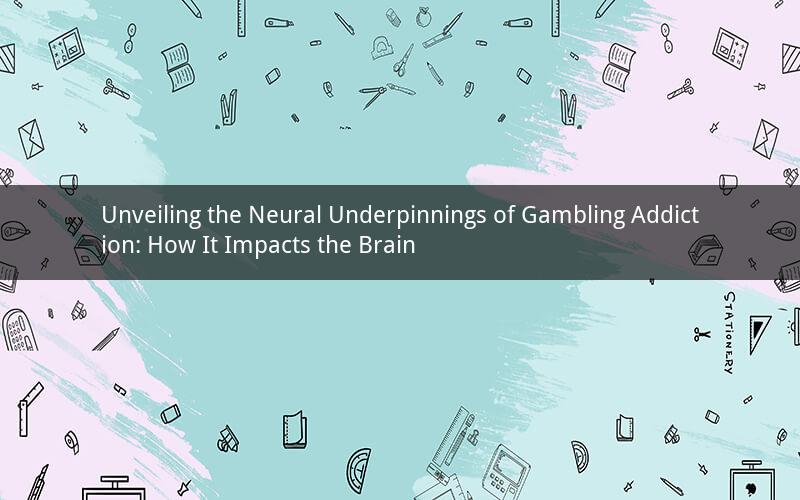
Introduction:
Gambling addiction, often referred to as problem gambling, is a complex disorder that affects individuals on multiple levels. While the social and psychological consequences of gambling addiction are well-documented, the impact on the brain remains a subject of considerable interest. This article delves into the neural mechanisms behind gambling addiction, exploring how it affects the brain and its functions. By understanding these underlying processes, we can gain insights into the development, progression, and treatment of this addiction.
1. The Reward System and Dopamine:
The reward system plays a crucial role in gambling addiction. This system is primarily centered around the brain's neurotransmitter dopamine, which is responsible for regulating pleasure and motivation. When individuals engage in gambling activities, the brain releases dopamine, creating a sense of euphoria and reward. Over time, repeated exposure to gambling leads to changes in the brain's reward system, making it more sensitive to rewards associated with gambling. This heightened sensitivity can lead to increased gambling behavior and a stronger addiction.
2. Brain Regions Involved in Decision-Making and Impulse Control:
Several brain regions are involved in decision-making and impulse control, and their dysfunction is often observed in individuals with gambling addiction. The prefrontal cortex, located in the frontal lobe, is responsible for higher-order cognitive functions, including decision-making, planning, and impulse control. In gambling addiction, the prefrontal cortex may become less active, leading to impaired decision-making and increased impulsivity. Additionally, the ventral striatum, a region involved in reward processing, becomes hyperactive in individuals with gambling addiction, further reinforcing impulsive behaviors.
3. Changes in Brain Connectivity:
Research has shown that gambling addiction can lead to alterations in brain connectivity, affecting communication between different brain regions. For instance, studies have found that individuals with gambling addiction exhibit reduced connectivity between the prefrontal cortex and the ventral striatum. This reduced connectivity can contribute to impaired decision-making and increased risk-taking behaviors. Furthermore, changes in connectivity between the prefrontal cortex and the limbic system, which is involved in emotions and motivation, have also been observed in gambling addiction.
4. The Role of Stress and Reward Sensitivity:
Stress plays a significant role in the development and maintenance of gambling addiction. When individuals experience stress, the brain releases stress hormones, such as cortisol, which can affect the reward system. Prolonged exposure to stress can lead to increased sensitivity to rewards, making individuals more susceptible to gambling. Additionally, individuals with a genetic predisposition to higher reward sensitivity may be more vulnerable to developing gambling addiction. This heightened sensitivity to rewards can drive individuals to seek out gambling activities as a means of obtaining relief from stress.
5. Treatment and Intervention:
Understanding the neural mechanisms behind gambling addiction is crucial for developing effective treatment and intervention strategies. Cognitive-behavioral therapy (CBT) has been shown to be effective in treating gambling addiction. CBT focuses on identifying and modifying maladaptive thoughts and behaviors associated with gambling. Additionally, medications targeting the brain's reward system, such as dopamine receptor antagonists, have shown promise in reducing gambling behavior. Furthermore, support groups and self-help strategies can also aid in recovery from gambling addiction.
Questions and Answers:
1. How does gambling addiction affect the brain's reward system?
Gambling addiction affects the brain's reward system by causing changes in the neurotransmitter dopamine, which is responsible for regulating pleasure and motivation. This leads to increased sensitivity to rewards associated with gambling, making individuals more susceptible to developing an addiction.
2. What role does the prefrontal cortex play in gambling addiction?
The prefrontal cortex plays a crucial role in gambling addiction by regulating decision-making and impulse control. In individuals with gambling addiction, the prefrontal cortex may become less active, leading to impaired decision-making and increased impulsivity.
3. Can stress contribute to the development of gambling addiction?
Yes, stress can contribute to the development of gambling addiction. Prolonged exposure to stress can lead to increased sensitivity to rewards, making individuals more susceptible to seeking out gambling activities as a means of obtaining relief from stress.
4. What are some effective treatment strategies for gambling addiction?
Effective treatment strategies for gambling addiction include cognitive-behavioral therapy (CBT), medications targeting the brain's reward system, support groups, and self-help strategies. These interventions aim to modify maladaptive thoughts and behaviors, reduce impulsivity, and provide support for individuals in recovery.
5. Can brain imaging techniques help in understanding gambling addiction?
Yes, brain imaging techniques, such as functional magnetic resonance imaging (fMRI) and positron emission tomography (PET), can help in understanding gambling addiction. These techniques allow researchers to observe changes in brain activity and connectivity, providing insights into the neural mechanisms underlying the disorder.